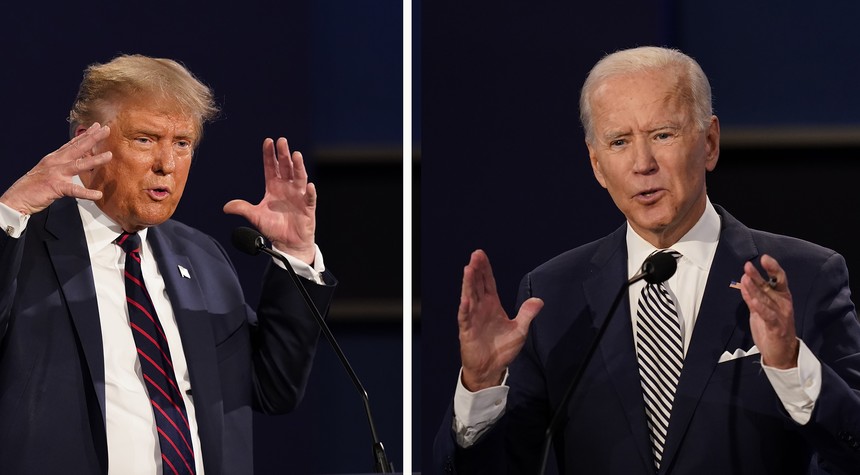With the 2024 presidential election some 20 months away as I write, the speculation and behind-the-scenes machinations are at least as interesting as the public goings-on and political punditry.
That said, the two salient questions this far out are who might challenge Joe Biden for the Democrat nomination, and who might challenge presumed front-runner Donald Trump for the GOP nod.
While a majority of Democrat lawmakers have been careful not to throw the increasingly acuity-challenged Biden under the bus (not yet, that is), reports suggest that behind the scenes, Democrats are terrified by the thought of a Biden candidacy. Opposition (and support) within the Republican Party to a third Trump nomination is somewhat more public but polarized.
So again, the two biggest questions are if not Biden for the Dems, who? And whether and when Ron DeSantis will toss his hat into the ring, which smart money suggests will happen by early summer.
So that’s where things stand, as we speak. Or do they?
As reported by the Washington Examiner, a prominent Democratic-backed think tank is sounding the alarm about possible efforts to create a third-party presidential ticket in 2024, and warning that the effort could hand the election to Trump, irrespective of the eventual Democrat ticket.
The policy group Third Way warned on Tuesday that No Labels has been working behind the scenes for months to field a bipartisan “unity ticket” in 2024, which they call an “insurance policy,” claiming to fear that “both major political parties could nominate divisive presidential candidates that a majority of the country finds unacceptable.”
Here’s more, via Third Way:
For No Labels, the moderate President Biden falls into this “unacceptable” category. The bottom line: Their candidate cannot win the presidency—and, as Paul Begala noted, such a candidate “will succeed in electing Trump.”
To suggest Joe Biden is a “moderate” is to ignore his extreme turn to the left since Day One of his destructive presidency, with few exceptions. No Labels wants no way for either option to happen. Via a September op-ed in The New York Times, written by none other than pretend “conservative” New York Times columnist David Brooks:
The No Labels operation is a $70 million effort, of which $46 million has already been raised or pledged [as of early September, 2022]. It [seeks] to gain ballot access for a prospective third candidate in all 50 states and the District of Columbia. […]
The group’s research suggests there are 64.5 million voters who would support such an effort, including roughly a third of the people who supported Donald Trump in 2020 and 20 percent of the Democrats who supported Joe Biden in that year, as well as a slew of independents.
[No Labels seeks] to find a policy agenda that appeals to unity voters. The group has come up with a series of … positions on major issues: comprehensive immigration reform with stronger borders and a path to citizenship for DACA immigrants, American energy self-sufficiency while transitioning to cleaner sources, no guns for anyone under 21 and universal background checks, moderate abortion policies with abortion legal until about 15 weeks.
[It also seeks] to create an infrastructure to nominate and support a potential candidate. There’s already a network of state co-chairs and local volunteers.
No Labels claims it’s not interested in building an ongoing third party, but merely a one-off effort to deny both Biden and Trump the presidency. Or, presumably, any other Democrat or Republican nominees. Third Way, however, believes the so-called “insurance policy would only ensure a Trump win, which I believe will happen by early summer:
No Labels is arguing this is a unique historical moment that gives their “unity ticket” a real shot at winning the White House. But that is an illusion. The data and historical evidence are clear: no third-party candidate would come close to winning.
Third Way cited the historical failure of third-party candidates, what it called “the polling mirage” that while various third-party have initially polled well, they’ve plummeted back to earth as voters overwhelmingly gravitated to the major parties by election day. Here’s more:
No Labels casts Biden and Trump as equally extreme and frames their ticket as an antidote to a rematch. But this is a smokescreen. Joe Biden has governed as a mainstream moderate, passing more bipartisan legislation than anyone dreamed possible.
Meanwhile, No Labels has previously bestowed on Trump their “problem solver” award, given to elected officials who agree to work in a “bipartisan” manner.
Given the overwhelming odds against a third-party candidate and the mountain of evidence about who their ticket would hurt, the conclusion is inescapable:
No Labels is committed to fielding a candidate that will, intentionally or not, provide a crucial boost to Republicans – and a major obstacle to Biden. As a result, they’ll make it far more likely—if not certain—that Donald Trump returns to the White House.
“Moderate” Biden, no, machinations, indeed.
The Bottom Line.
So let’s boil this down a bit. Third Way is terrified of the prospects of a 2024 third-party candidate because it believes the election will be handed to Trump if it happens. Meanwhile, left-“leaning” No Labels, which also fears a Trump win, believes Biden can’t beat Trump, so it wants to elect a candidate it believes can take down Trump.
But what if neither Biden nor Trump — or either — wins their respective nominations? No Label claims it will “stand down” if “this path outside the two major party candidates is not needed.” Yet, the group has failed to define its “not needed” criteria.
2024 is likely to be a presidential election for the ages — one way or another.















